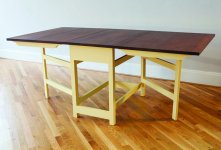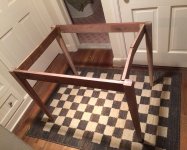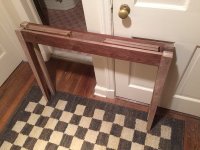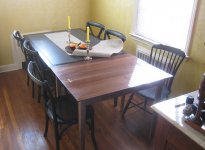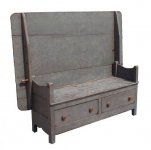I have two books that I have read cover to cover (shown below). Much of it seemed “old fashioned when I read it in 1995? And in 2000 or so. One was originally published in 1970, so no mention of dominoes, pocket hole jigs or self-centering dowel fixtures.
The other was from 1992, but still old.
But both had excellent illustrations.
I have another book, which I won’t share because of some of the dangerous suggestions they included. It was written by the editor of one of the magazines of that time. (He suggested mounting two rip blades with a spacer between, to enable you to rip two pieces at one time. It seemed like a good idea to me until I understood about kick back.)
I also have a much older book—I did not find it when I looked, but I will look again. From that book, I actual implemented a technique.
I had built a flat file with a maximum of 44” x 44” prints. Each drawer had sides of just 2”. The problem was that the sides would bow out and the plywood set in grooves would fall down.
The suggestion was to take a 2” x 1/2” board that was long enough to span the width of the drawer (outside dimensions). To cut a dovetail , and a dovetail opening midpoint on the drawer and glue it in on the underside of the drawers.
I did the first drawer that way (it worked fine, but took me a long time to execute). For the rest of the drawers I simply notched the drawer sides (underneath) and attached the spanning 2” strip using 1/4” dowels (that worked fine too—but less elegant).
If I can find it, I will show it too.
I will part with either or both books to anyone who promises to reimburse me for postage. (USA, only). (I will enforce payment by threats of embarrassing public posts—so I am sure I will be paid.) [big grin]
I was enchanted by both books when I first read them. Most of the techniques seem cumbersome by contemporary standards, so I don’t know how useful they are.

